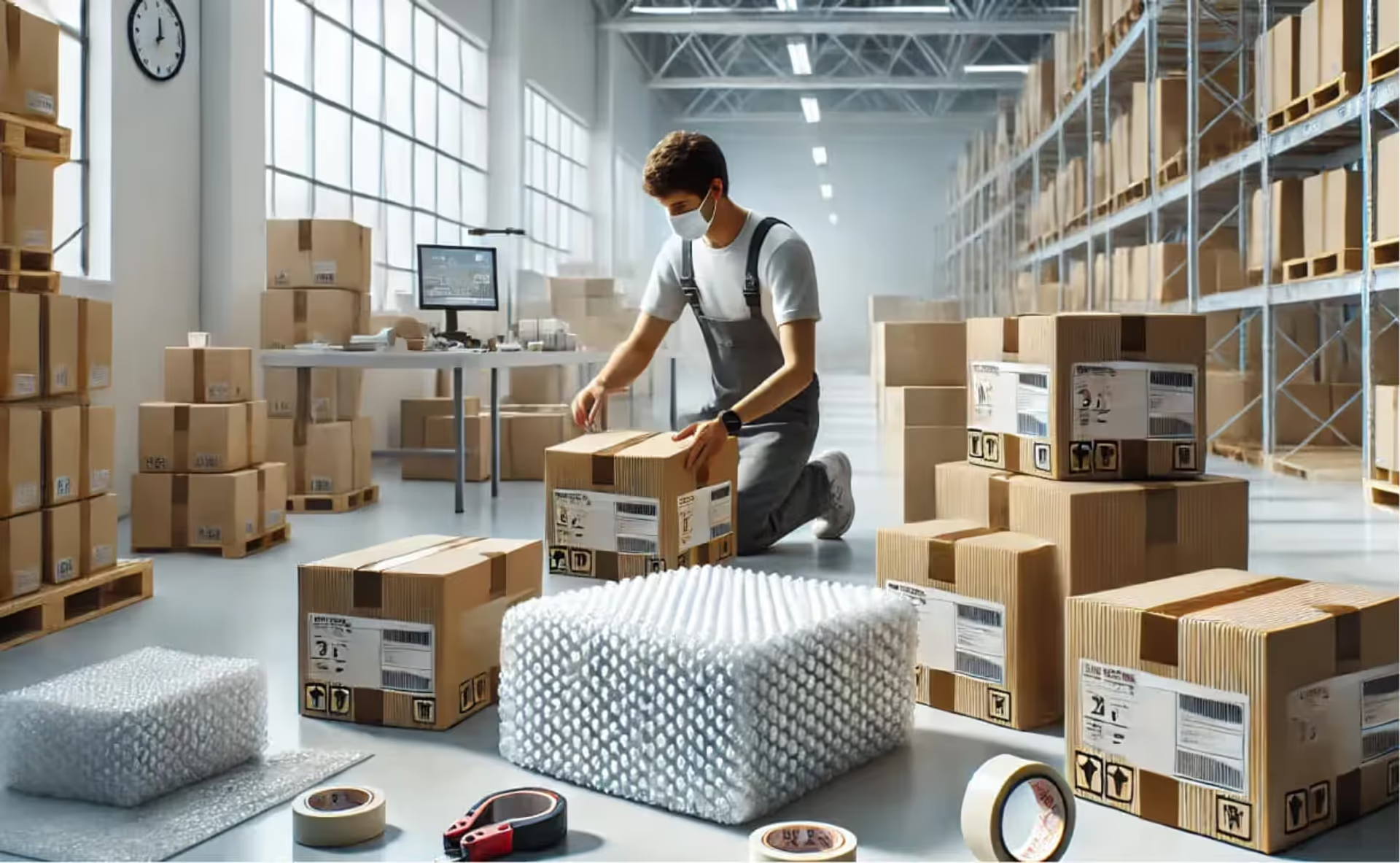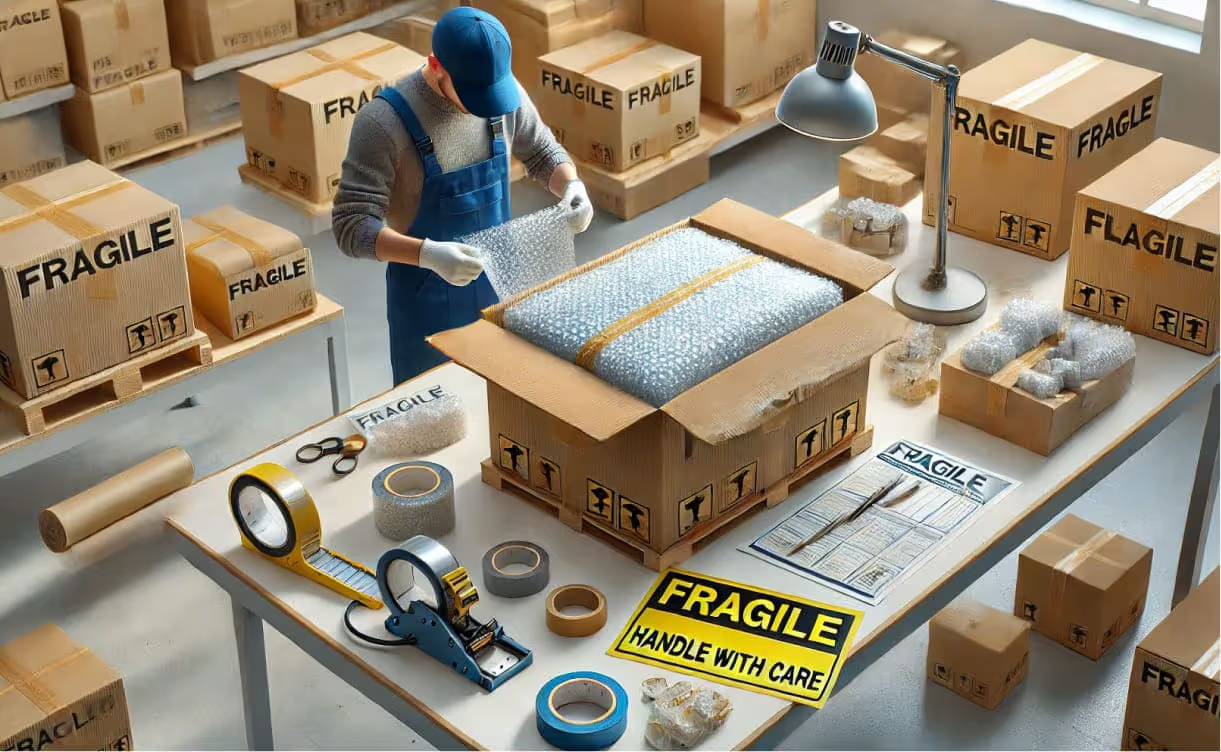The Impact of Warehousing on Delivery Efficiency
JANUARY 14, 2025

Ensuring goods reach their destination in pristine condition is a critical part of the logistics process. Effective packaging not only prevents damage during transit but also enhances operational efficiency and customer satisfaction. With goods traveling across land, sea, and air, each mode of transportation presents unique challenges that must be addressed through strategic preparation and robust packaging techniques.
This comprehensive guide explores proven strategies and practical tips for preparing your goods for hassle-free transportation. By understanding the nuances of packaging, businesses can minimize risks, optimize costs, and ensure smooth delivery operations.

Packaging is the first line of defense for goods in transit. It protects products from physical damage, environmental factors, and mishandling during transportation. Moreover, effective packaging contributes to overall supply chain efficiency by streamlining handling, storage, and shipping processes.
Damage Prevention:
Well-packaged goods are less likely to sustain damage from shocks, vibrations, or impacts during transit.
Proper sealing protects items from moisture, dust, and other environmental contaminants.
Optimized packaging reduces the need for additional protective measures and minimizes the risk of returns or refunds.
Lightweight materials lower transportation costs by reducing shipping weight.
Enhanced Customer Satisfaction:
Intact and well-presented goods improve the customer experience, fostering loyalty and repeat business.
Proper branding on packaging can elevate brand perception.
By investing in appropriate packaging techniques, businesses can protect their products and their reputation.
Different modes of transportation present unique risks and requirements that influence packaging decisions. Understanding these challenges is crucial for preparing goods effectively.
Challenges:
Goods may encounter frequent handling during loading and unloading.
Road vibrations and sudden stops can lead to damage.
Packaging Tips:
Use shock-absorbing materials like bubble wrap or foam inserts to cushion products.
Secure goods on pallets with stretch wrap or strapping to prevent shifting.
Label fragile items clearly to alert handlers.
Challenges:
Exposure to humidity, saltwater, and temperature fluctuations.
Prolonged transit times increase the risk of moisture-related damage.
Packaging Tips:
Use moisture-resistant materials, such as plastic liners or waterproof coatings.
Employ desiccants to absorb excess moisture inside packages.
Seal containers tightly to prevent water intrusion.
Challenges:
Limited space and strict weight restrictions.
Variations in air pressure and temperature during flight.
Packaging Tips:
Choose lightweight but durable materials to comply with weight limitations.
Avoid overpacking to maximize space utilization.
Use airtight seals to prevent pressure-related damage.
By tailoring packaging strategies to the chosen transportation mode, businesses can mitigate risks and ensure smooth transit.
Understanding the specific characteristics of the goods being shipped is the foundation of effective packaging.
Product Fragility:
Determine whether items are breakable or require extra cushioning.
Examples: Glassware, electronics, and ceramics.
Weight and Size:
Heavier items may need reinforced packaging materials.
Bulky products may require custom packaging solutions.
Sensitivity to Environmental Factors:
Identify items that are susceptible to moisture, temperature changes, or light exposure.
Examples: Perishable foods, pharmaceuticals, and artwork.
Conducting a thorough assessment ensures that packaging decisions align with the unique needs of the goods.
Selecting appropriate materials is critical for protecting goods during transit. Common options include:
Cardboard Boxes:
Ideal for lightweight and medium-weight items.
Use double-wall or triple-wall corrugated boxes for added durability.
Plastic Containers:
Suitable for moisture-sensitive or heavy items.
Offer excellent durability and reusability.
Cushioning Materials:
Examples: Bubble wrap, foam inserts, air pillows.
Prevent movement and absorb shocks.
Pallets and Crates:
Essential for large or heavy shipments.
Use heat-treated wood for international shipments to comply with phytosanitary regulations.
Sealing Materials:
Strong adhesives, packing tape, or strapping ensure packages remain secure.
Tamper-evident seals enhance security.
Investing in high-quality materials reduces the risk of damage and ensures compliance with shipping regulations.
An efficient packaging design balances protection, cost, and sustainability. Key considerations include:
Minimize Void Space:
Use appropriately sized packaging to reduce movement and prevent damage.
Fill voids with cushioning materials to stabilize items.
Stackability:
Design packages that can be stacked securely without crushing.
Use reinforced edges and flat surfaces.
Opt for biodegradable or recyclable materials to reduce environmental impact.
Explore reusable packaging options for long-term cost savings.
Optimized packaging design enhances efficiency and aligns with sustainability goals.

Clear labeling and accurate documentation are essential for hassle-free transportation. Mislabeling or missing paperwork can lead to delays, fines, or lost shipments.
Use Standardized Labels:
Include essential information such as shipping address, return address, and tracking numbers.
Use universally recognized symbols for fragile, hazardous, or temperature-sensitive goods.
Ensure Visibility:
Place labels on multiple sides of the package for easy identification.
Use weather-resistant labels to prevent smudging or peeling.
Include Handling Instructions:
Provide clear instructions for special handling requirements (e.g., "This Side Up," "Keep Dry").
Shipping Documents:
Examples: Bill of lading, packing list, commercial invoice.
Ensure accuracy to facilitate customs clearance and delivery.
Regulatory Compliance:
Include certificates or permits required for restricted goods.
Verify compliance with international shipping standards.
Proper labeling and documentation streamline the transportation process and reduce the risk of errors.
Technology has revolutionized packaging and logistics, enabling businesses to enhance efficiency and reduce costs. Key innovations include:
Streamline the packing process by reducing manual labor.
Ensure consistent packaging quality and faster throughput.
Monitor environmental conditions such as temperature and humidity in real-time.
Provide alerts for deviations to prevent damage.
Analyze shipping data to identify patterns and optimize packaging strategies.
Predict demand fluctuations to align inventory and packaging needs.
By embracing technology, businesses can achieve greater precision and control over their logistics operations.
Preparing goods for hassle-free transportation requires careful planning, the right materials, and attention to detail. By understanding the challenges posed by different transportation modes and implementing best practices in packaging and labeling, businesses can ensure their products arrive intact and on time.
Leveraging advanced technologies and optimizing packaging design further enhances efficiency and cost-effectiveness. As customer expectations continue to rise, prioritizing proper packaging is essential for maintaining a competitive edge in the global logistics landscape.
By adopting the strategies outlined in this guide, businesses can achieve seamless transportation processes, reduce risks, and build lasting customer trust.